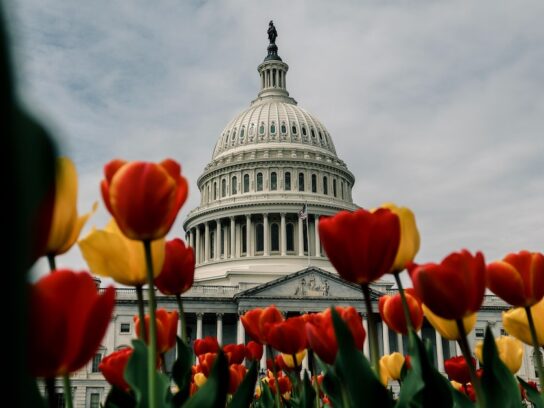
The House recently passed the SECURE Act 2.0 legislation – the Securing a Strong Retirement Act of 2022 – that may bring several benefits to us saving for retirement. It was an overwhelmingly bipartisan bill – 414 to 5; can’t get any bipartisan than that. SECURE Act 2.0 aims to give more incentives for Americans to save more for retirement. In this blog, I’ll share the 6 main provisions of the bill, which could become law if passed by the Senate later this year. I’ll also share how each provision can impact your retirement.
- 401(k) matching for student loan payments
For employees prioritizing paying off student loans and not saving for retirement, this bill would allow the employee to get an employer 401(k) match on the amount paid on their student loan. This means that, even if the employee makes no contributions of their own, the employer will deposit their matching contribution in the employee’s retirement account.This is a great option for those in their 20s or 30s who are still paying off their student loans. Many want to prioritize paying off their student loans so it’s not hanging over their heads, or because it makes financial sense (if interest rate is high). This will also help young employees take advantage of saving for retirement early in their careers. - Tax-Free Growth: SEP AND SIMPLE IRA
SECURE Act 2.0 may allow contributions to SEP and SIMPLE IRA to be tax-free. The current law only allows pre-tax contributions.It also would require 401(k) catch-up contributions to be made after taxes are paid. This would be via Roth 401(k) or Roth TSP if you work for the government.The government will get their tax money sooner, but that’s fine since your catch-up contributions will grow tax-free. This could work in your favor if you’re in a lower tax bracket now compared to in retirement. - Even More Tax-Free Growth: Employer matching contributions to a Roth 401(k)
Employer matching contributions are currently paid into an employee’s pre tax 401(k) account. SECURE Act 2.0 would allow employees the option to channel employer matching contributions into a Roth 401(k) account. This would be a great option because it would allow employer matching to grow tax-free.It also works great if you’re in a lower tax bracket now compared to retirement. For example, a $120,000 salary now means that you’re in the 24% tax bracket. However, once you reach retirement it’s possible you may be in the 25% or 28% tax bracket. - Auto-enrollment in 401(k) retirement savings plans and an auto-increase in the contribution amountSECURE Act 2.0 requires employers to automatically enroll eligible workers in 401(k) or 403(b) plans at 3% of their salary. This would increase annually by 1%, until the contribution reaches 10% of an employee’s pay. Employees could still opt out or select a different contribution amount. The current retirement plans would also be grand-fathered in.This is significant because the median 401(k) balance for a 65 year old in America is only $82,000. That is not nearly enough to retire with. This will hopefully help Americans prepare for retirement more.Businesses with 10 or fewer employees or are less than 3 years old would be excluded from the mandate. Businesses who already have 401(k) or 403(b) plans set up before the start of SECURE Act 2.0 would also be exempt.I like this as it’s sensitive to small business needs.
- Bigger Catch-Up ContributionsCatch-up contributions would increase to $10,000 for ages 62, 63, and 64, starting in 2024. The catch-up contribution limit for 2022 is $6,500 for ages 50 and up. If the 401(k) maximum in 2024 is $22,000, you can put in as much as $32,000 if you’re 62, 63, or 64.Catch-up limits for IRA owners who are 50 years old would be indexed for inflation. Since 2006, the annual increase in catch-up contribution amounts has been limited to $1,000.These provisions would allow Americans approaching retirement to save more.
- Finding lost 401(k)sSECURE Act 2.0 would require the Department of Labor to create a national database for Americans to find and reclaim lost retirement accounts. Sometimes companies switch 401(k) vendors, and things get lost in the mail, and before you know it, you don’t know how to access your 401(k), or you might even forget that you have one. This database will hopefully make it easier for Americans to check and find any lost retirement accounts.
SECURE Act 2.0 could change the way you save for retirement
SECURE Act 2.0 has the potential to help address the retirement crisis facing many American workers. It would allow more individuals to reach their savings goals and provide more flexibility upon retirement. Take the time to assess your retirement savings today and then consider what new opportunities may be available in the future to enhance your savings. If you are interested in having a comprehensive financial plan, or have any additional questions about how SECURE Act 2.0 may affect you, schedule a free discovery call with one of our financial advisors today



Comments are closed.